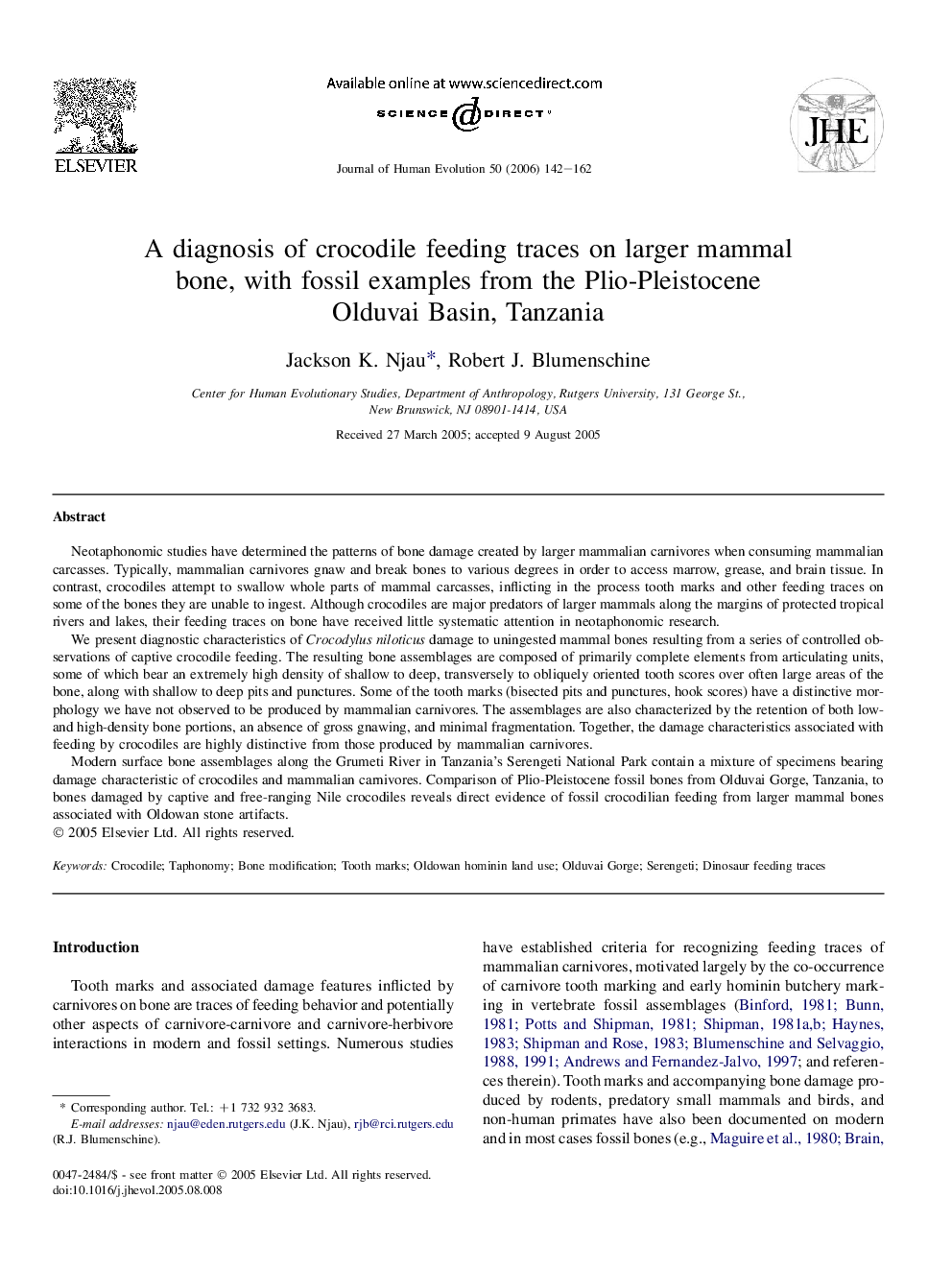| کد مقاله | کد نشریه | سال انتشار | مقاله انگلیسی | نسخه تمام متن |
|---|---|---|---|---|
| 4557395 | 1329554 | 2006 | 21 صفحه PDF | دانلود رایگان |

Neotaphonomic studies have determined the patterns of bone damage created by larger mammalian carnivores when consuming mammalian carcasses. Typically, mammalian carnivores gnaw and break bones to various degrees in order to access marrow, grease, and brain tissue. In contrast, crocodiles attempt to swallow whole parts of mammal carcasses, inflicting in the process tooth marks and other feeding traces on some of the bones they are unable to ingest. Although crocodiles are major predators of larger mammals along the margins of protected tropical rivers and lakes, their feeding traces on bone have received little systematic attention in neotaphonomic research.We present diagnostic characteristics of Crocodylus niloticus damage to uningested mammal bones resulting from a series of controlled observations of captive crocodile feeding. The resulting bone assemblages are composed of primarily complete elements from articulating units, some of which bear an extremely high density of shallow to deep, transversely to obliquely oriented tooth scores over often large areas of the bone, along with shallow to deep pits and punctures. Some of the tooth marks (bisected pits and punctures, hook scores) have a distinctive morphology we have not observed to be produced by mammalian carnivores. The assemblages are also characterized by the retention of both low- and high-density bone portions, an absence of gross gnawing, and minimal fragmentation. Together, the damage characteristics associated with feeding by crocodiles are highly distinctive from those produced by mammalian carnivores.Modern surface bone assemblages along the Grumeti River in Tanzania's Serengeti National Park contain a mixture of specimens bearing damage characteristic of crocodiles and mammalian carnivores. Comparison of Plio-Pleistocene fossil bones from Olduvai Gorge, Tanzania, to bones damaged by captive and free-ranging Nile crocodiles reveals direct evidence of fossil crocodilian feeding from larger mammal bones associated with Oldowan stone artifacts.
Journal: Journal of Human Evolution - Volume 50, Issue 2, February 2006, Pages 142–162